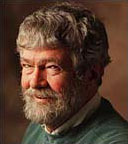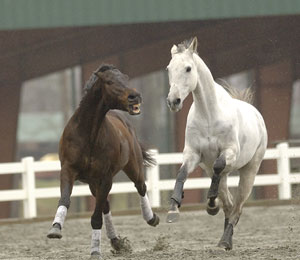 |
→ May 2005 Contents → Camera Corner
|
 | |||||||||||||||
Camera Corner:
Nikon D2X Report |
 |
||||||||||||||
|
The Nikon D2X is a big camera in every way.
Big in megapixels, Big in price and Big in performance!
The D2X retains the Nikon feel in every way. Controls fit comfortably in the hands of anyone with prior Nikon experience and the new features are conveniently located. The ability to put the new high-speed crop mode on the function button on the right front of the camera lets you easily switch in and out of that mode without taking the camera from your eye. Setting the multi selector switch to toggle the LCD to a 100 percent-magnified view is a quick and easy way to check sharpness. Being able to scroll around anywhere quickly in the huge 2.5-inch LCD screen is a real treat. A new feature allows you to use the command dial to rotate through all the other images you have taken at that same magnification, allowing you to check expressions or open eyes easily. That screen is a new 235,000-pixel high-resolution LCD that features an all-digital interface for clear, flicker-free display of preview images and the Shooting, Playback, Set-up and Custom Settings menus. On-demand information available includes a new RGB Histogram display that shows separate Red, Green, and Blue and overall Luminance channels as well as a chronological "History Menu" that lists recently accessed settings.
High resolution is achieved by an all-new 12.4-million pixel DX format CMOS image sensor and a new image processing system that can shoot full-resolution images at 5 frames per second and a buffer that can hold 22 consecutive JPEGS or 17 NEFs at a time.
Need more frames per second? Instantly switch to the 6.8- megapixel "High-Speed Cropped Image" mode where you can go up to 8 frames a second and the buffer will now hold 35 consecutive JPEGs or 25 NEFs.
The ISO range is from 100 to 800 with Hi-1 and Hi-2 choices that represent 1600 and 3200. ASA 100 to 400 produces excellent images, ISO 800 is a little noisy but probably equal to anything else out there. The Hi settings get progressively worse as you would expect. You have two options on built-in noise suppression, long exposure and high ISO so you can play with both to tweak your system to the right amount of noise reduction and loss of detail when you are dealing with either of those situations.
When I first read about the camera I had no idea that I would become a fan of the high-speed crop mode; it sounded like a gimmick. Getting the chance to take some pictures at Road Atlanta and a horse-jumping practice soon had me happily firing away at 8 frames a second in RAW mode using that 6.8-megapixel file size that is bigger than the D2H or the D70. An added bonus, or perhaps minus depending on the situation, is that the lens magnification factor jumps from the normal 1.5 to 2X because you are using a smaller portion of the sensor. I considered it a plus in my situation because it was overcast and raining and the 200mm VR F2 lens I was using suddenly became a 400mm F2 and you have to admit that there are not a lot of 400mm F2 lenses out there. The viewfinder shows illuminated crop marks and a crop mode symbol in the lower left corner so you can easily tell when HSCM is selected. As previously mentioned you can set the function button on the right front of the camera to toggle in and out of this mode very quickly. You can also set that button to do a host of other things including turning your SB800 on and off if you are in a situation where you want to power up and power off your flash while not taking your eye from the viewfinder.
The camera battery is the same as the D2H, a lithium-ion system that is rated at 2,000 shots per charge with an accurate real-time status display. Going into the setup menu for the battery info gives you the number of shots taken and the percentage of battery that is left.
Other great features are with flash and wireless transmission.
When you use the SB-800 and SB600 speedlights with the D2X you can take advantage of Nikon's Creative Lighting System using I-TTL Advanced Wireless Lighting controls. In plain speak that means you can control as many lights as you can afford from the SB800 mounted on top of your camera. Control means you can increase or decrease the output for up to three groups of lights in full TTL. No more having to move around the room and adjust the light separately, you can do it all from the camera. Joe McNally demonstrated the system using a couple of six-packs of strobes and the results are spectacular.
Summing up in very few words: It is an excellent camera that will allow you to make the best of any situation if you work at it. It is really two cameras in one — High-end, high-quality, big megapixel camera for the studio or wedding photographer or serious photojournalist, and a high-speed sports photographer's camera with an above-average file size.
It took Nikon quite a while to update the D1X but it turns out it was worth the wait!
© Chick Harrity
|
|||||||||||||||
Back to May 2005 Contents
|
|




